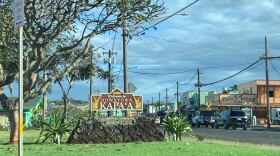Hawaiʻi is expecting to collect $100 million a year from the new "Green Fee" tax on hotels and cruise ships that starts next year. The 0.75 percentage point increase to the state’s visitor tax — bringing it to 11% — will be spent on climate resilience.
But what types of projects need the funding most? Care for ʻĀina Now, a group that advocated for the Green Fee, wants community input.
One of its leaders, Jack Kittinger, is encouraging people to fill out the coalition’s survey.
"Community groups are on the front lines all across the islands. So if we want to make progress fast on our climate resiliency efforts, we need to ensure those initiatives and efforts are being considered for the Green Fee funding so that we can put that public money to work in responsible, but also fast and effective ways to bolster our climate resilience,” he said.
“The climate emergency is not slowing down, so we need to speed up to match our efforts with the increasing vulnerabilities that we all face.”
Care for ʻĀina Now wants to use the feedback from the survey to shape their advocacy for projects and needs to government agencies.
There are three different buckets that funding can go towards. The first is protecting the state’s natural resources, such as its native forests, plants and freshwater resources. The second is increasing the resilience of infrastructure to withstand climate-related disasters. And the third is tourism sustainability, like maintaining parks and beaches, and mitigating tourism impacts on the environment.
Gov. Josh Green also plans to create the Green Fee Initiative, where organizations will be able to join meetings and give their input on how the funds should be spent. The official announcement is expected in the next few weeks.
"Priorities will be ready before the legislative session, and there will be multiple ways for the public to provide input to suggest how the revenue might be spent," the governor's office wrote in an email.
The Care for ʻĀina Now survey deadline is Friday. That’s because departments are currently working on their budget proposals for Green’s consideration, which they will finalize in October.
“While the Legislature doesn't convene until January next year, there is a lot of activity in the budgeting process that leads up to that, that starts over the summer. We want to match that and be part of the overall picture for how the funds will be planned for,” Kittinger said.
“ It has been a long journey to get the Hawaiʻi Green Fee bill passed, but one journey ends, another begins, and it's equally important now that we all work together as a constituency across the islands to ensure that the bill is implemented in the best way possible to support our priorities and our resiliency under climate change.”
The governor's budget proposal will be sent to the Legislature for its approval when the 2026 legislative session starts in January.






